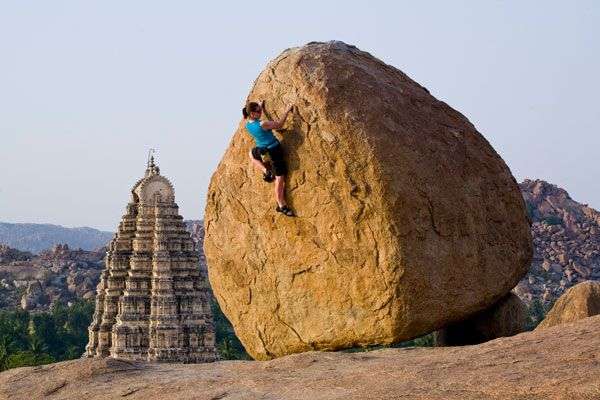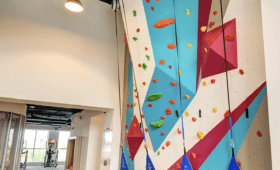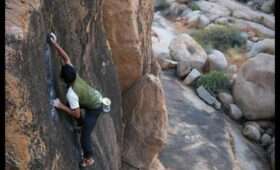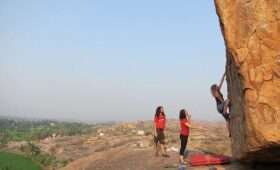“Life is either a thrilling adventure or nothing at all.”
Rock climbing is an adventure sport that involves scaling rock formations or artificial rock walls using specialized equipment and techniques. It can be done in both indoor and outdoor settings. The sport offers a range of physical and mental benefits, including improved strength, endurance, balance, coordination, and problem-solving skills. It also provides a unique adrenaline rush, a sense of accomplishment, and an opportunity to enjoy the beauty of nature. Additionally, it helps to reduce stress and can lead to better mental well-being. Overall, rock climbing is an exciting and challenging activity that can improve one’s overall health and happiness.
Types of rock climbing available in Bangalore
Bangalore, India is a hub for rock climbing and adventure sports. The city offers a variety of climbing experiences for climbers of all levels, including
- Bouldering – This type of rock climbing involves scaling short, challenging routes without using ropes or harnesses. Bouldering is a great way to improve strength and technique.
- Sport Climbing – Sport climbing involves climbing routes that are equipped with fixed anchors and bolts. Climbers use ropes and quickdraws for protection and to catch them in case of a fall.
- Top Roping – Top roping is a form of sport climbing where the rope is anchored at the top of the climb, and the climber is secured from above.
- Trad Climbing – Trad climbing, also known as traditional climbing, involves placing removable protection into the rock as the climber ascends.
Bangalore has several indoor and outdoor climbing destinations, including the Bangalore Mountaineering Club, the Ramanashree California Resort, and the turahalli forest which offers excellent boulder climbing opportunities. Several climbing gyms in the city offer a safe and controlled environment for climbers to practice and improve their skills.
Different techniques are involved in rock climbing
Rock climbing involves various techniques that allow climbers to ascend a rock formation or artificial wall. Some of the most commonly used techniques in rock climbing are:
- Footwork – Good footwork is essential in rock climbing, as climbers need to find and maintain secure footholds while they climb.
- Body positioning – Maintaining proper body positioning, including keeping the centre of gravity over the feet and using the legs to support the body, is critical in rock climbing.
- Hand placement – Proper hand placement allows climbers to grip and hold onto the rock while they climb. There are various handholds, including jugs, edges, and pockets, that climbers use to grip the rock.
- Smearing – Smearing is a technique that involves using the rubber sole of the climbing shoes to push against the rock to maintain balance and upward momentum.
- Jamming – Jamming involves placing a body part, such as a hand or foot, into a crack in the rock and using it for support.
- Mantling – Mantling is a technique used to reach the top of a boulder or climb, in which the climber pushes down on a ledge or holds to maintain balance and reach the top.
- Dyno – A dyno is a dynamic move, in which a climber lunges for a hold that is out of reach.
These techniques, along with proper equipment use and safety practices, are critical components of successful rock climbing. As climbers progress in skill level, they often learn additional techniques to tackle more challenging routes.



